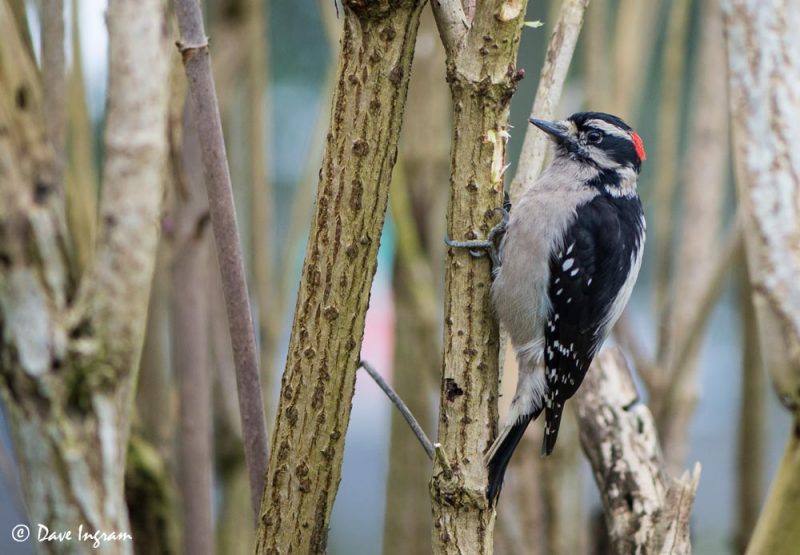Having a backyard (or in this case, front yard) suet feeder is great for easy, coffee drinking (shade grown/bird friendly of course), birdwatching. Since we’ve finally gotten around to putting our feeders up, we can settle in to enjoy the show. Over the course of a week a flock of bushtits make regular appearances, chestnut-backed chickadees stop in, and a lone ruby-crowned kinglet visits irregularly.
Over the years we’ve had a pair of downy woodpeckers(Picoides pubescens) stopping in at our feeders. I think they’re the same pair, but don’t have any way of knowing for sure. And while they’re attracted to the suet, they also appear to be finding all sorts of things in the domestic elderberry that we have in our yard. The bark of this fast growing shrub is soft and punky, as is the wood, which makes it ideal for insects and woodpeckers. Not a lot of work needs to be done for a meal.

Both my five-year-old son and three-year-old daughter love keeping an eye on the feeder and recently spotted a male downy woodpecker on the elderberry in the front yard. The suet feeder was nearby, but it focused its attention on one of the small stems. It took a little under 5 minutes for the woodpecker to excavate a hole in the soft wood and then pull a small white grub from the hole.

It was a fascinating learning opportunity for all of us. We speculated on what the woodpecker was searching for and looked for clues on the stems while watching it chip away at the soft bark. We were close enough to be able to see how it supported itself with its tail braced against the stem and the claws hooked onto the edges of the stem.
If you’ve got young kids or time on your hands, consider putting up a suet feeder. It’s well worth it!